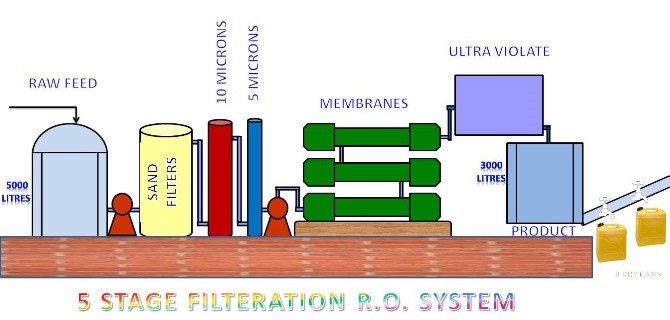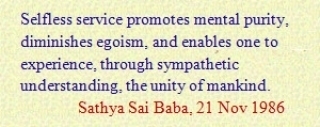

Introduction
Water is the elixir of life. But drinkable water is scarce in many parts of the world, and even if there is water, it may not be in the proximity of the needy. And even when water is available, it may be contaminated and unfit for drinking. Unfortunately, people resort to drinking contaminated water if there is no other choice, which makes them sick and unproductive.
The water in many places is contaminated with fluorides, dissolved solids, arsenic, e-coli bacteria, fertilisers, pesticides, metals, and typhoid- and cholera-causing bacteria. This has been the history in the villages and currently affects urban areas too.
Inspiration
Inspired by Sathya Sai Baba of India, who has provided pure drinking water to millions of people in southern India, including several affected districts of the State of Andhra Pradesh, the Sri Sathya Sai Seva Organisation (SSSO) in Andhra Pradesh made plans to provide safe and pure drinking water to villages where fluoride content exceeds the specified limits.
The project, called the Sri Sathya Sai Premamrutha Dhara (“loving and immortal support”) Project , has provided more than 100 villages with drinking water from a variety of sources, such as from newly dug wells, clearing of old wells, drilling of bore wells, and connecting with rivers, lakes, and springs through networks of piping and water storage tanks.
The Organisation has also established 38 water purification plants in as many villages. These plants remove fluoride from the feed water, reduce the total dissolved solids (TDS), and eliminate other contaminants and bacteria that affect the health of the populace. The processed water meets the World Health Organisation (WHO) standards, and the project to date has provided nearly 125,000 people with clean and potable drinking water, daily at their doorstep. Many more purification plants will be set up soon in affected villages as part of this ongoing activity, which will now also be taken up on a Pan-India basis.
Pure quality of the drinking water
1. The general fluoride level in raw feed water is from 2.5 ppm to 6.5 ppm in Andhra Pradesh and up to 12 ppm in other places in India. After the treatment (de-fluoridation), the flouride drops to the safe level of 1 ppm.
2. The total dissolved solids (TDS) in the raw feed water, comprising chemicals and qualities such as nitrites, sulphides, chlorides, calcium, and hardness, in many places is 1,000 ppm to 2,500 ppm; after treatment this reduces to 100 ppm, or very potable.
3. The purification plant includes a Reverse Osmosis (RO) process, which filters off all other undesirable elements and improves the water’s colour and taste, while retaining essential minerals in desired proportions by controlling the feed.
4. The very first defluoridation plant was set up in Bahadurpet-Aleru Mandal, in the Nalgonda district of Andhra Pradesh. The plant provides 1,400 people with a 12-litre Jerry can of clean, safe water daily.
Cost and running of the plants
The purification plant facilities are established by the Organisation at a cost of INR 0.1 to 0.4 million (US $2,000 to $8,000) each, depending on the feed water quality and estimated capacity need. These are built and handed over to the village committees, which then manage the plants on their own, operating on a nonprofit basis. The Organisation audits the facilities periodically.
Distribution of water to the villagers
A 12-liter Jerry can of water is taken by each household daily at a cost of only INR 1.00 ($0.02). In the current commercial marketplace, a litre of water costs typically INR 14.00 ($2.80) – nearly 175 times the cost of the water suppplied by our plants.
An even more important factor is the actual cost of production – only 5 paisa per liter (60 paisa per 12 litres). This covers power bill payments, operator’s salary, purchase of materials and parts, and maintenance of the plant. The remaining 3 paisa per liter is saved for village welfare needs.
All-India Techno Group support
All-India Techno Group (a sub-wing of the SSSO) selects and installs the best of proven equipment that has available annual maintenance support and service centers. The village water committee, comprising two men and two women, manages the day-to-day operations, which includes financial management and accounting.
In this way, the operation not only provides clean and safe drinking water but also supports the village welfare for the poorest of the poor in the village. This model of operation keeps all plants working nonstop from inception in every village, since there is always no dearth of funds. This is perhaps a uniquely successful model in India. The All-India Technology group of the service wing of the Sri Sathya Sai Seva Organisation has standardised the specifications of all criteria for such a set up, to make all their plants look alike and work alike, under the basic principle of love all and serve all!
Positive results, long-term benefits
In villages with these new water plants, quite a few stories can be heard about doctors no longer visiting these villages so often, because the problems of joint and body pains have disappeared and incidences of the common cold and other ailments have been greatly reduced. The villagers no longer have the additional burden of having to buy water from commercial establishments.
These facilities are popularly called “drinking water temples”. Unlike other religious shrines, however, people of all religions congregate here, irrespective of their faiths, and take water every day. These auspicious meeting places have transformed the mind sets of the people and have improved community living standards and relationships.
The village women and children are very happy and healthy, since their age-old problems have been addressed and provided with permanent solutions. The menfolk are relieved of many health problems and are able to concentrate on field work and plantations.

Future plans
This project is now being extended to cover the entire country, to launch the provision of safe and clean water, available all over the country, year after year. The Organisation, with the support of its Technology group, is now working on a plan to set up 100 water purification plants each year, in places of absolute need on an All-India basis.
Additional Info
For Additional Information:
Project Coordinator: Sri Sathya Sai Seva Organisation-Andhra Pradesh & Telangana
Contact Persons:
- Sri H.Srinivasulu, All India Techno Group Coordinator, Sri Sathya Sai Seva Organisation, mail ID: srisathyasaihyd@gmail.com
- Sri S G Chalam, State President, Sri Sathya Sai Seva Organisation-Andhra Pradesh, mail ID: sgchalam@yahoo.com / sp.ap@ssssoindia.org
- Sri P Venkat Rao, State President, Sri Sathya Sai Seva Organisation, Telangana
Mail id sp.tg@ssssoindia.org
- For General enquiries: Sri D Vishnu Vardhan Rao, admin@ssssoindia.org dvvrao@yahoo.com Mob +91 9440896720
Keywords
Drinking Water project, Purified Water, Andhra Pradesh, De-flouridation, Reverse Osmosis, Sri Sathya Sai Premamrutha Dhara Project, Sri Sathya Sai Seva Organisation-India (SSSO-India), All-India Technology Group-SSSO, Bahadurpet-Aleru Mandal, Nalgonda districtProject Details
Project start: 11/02/06
Project completion:
Stage of development:
Zone name: India
Lat/Longitude: 17° 23' N 78° 29' E
Affiliation: Sri Sathya Sai Seva Organisation, Andhra Pradesh
Service category: Drinking Water Supply
Author: Vishnu Donger
Project leader: S G Chalam & P Venkat Rao

Water access in village

Village water plant and taps

Water taps in tribal area

Water plant control panel


Water plant room